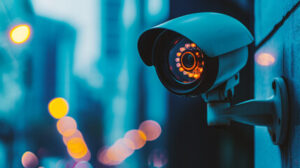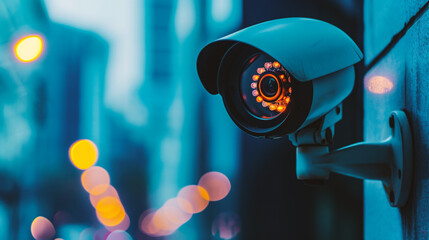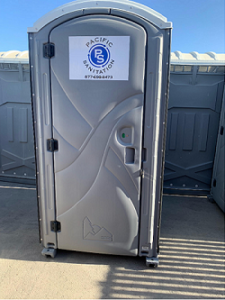Vision Detection Systems allow machines to spot problems – such as missing parts or defects – on the factory floor. They can run day and night, reducing staff demands at unconventional hours and protecting employees from hazardous conditions.
Advanced ML/AI algorithms help with object detection and image classification.
 Event-Based Vision Sensors
Event-Based Vision Sensors
The human eye is a remarkable sensor that captures light and converts it into a signal. It detects shadows and highlights, colors and shapes, and objects in motion. This system translates light into electrical impulses that travel through neurons in the visual cortex to generate perceptions of our surroundings. This vision technology is incredibly complex but it works well under most conditions. However, it is not perfect and is vulnerable to image corruption and extreme lighting conditions.
To overcome these limitations, new vision sensors are being developed that are more like the human eye. These are called event cameras and work differently from traditional frame-based sensors. They have a much larger dynamic range and operate faster than traditional cameras. They also produce 10–1,000x less data and require 17x less power.
Unlike frames, each pixel of an EVS sensor operates asynchronously and reports only when it perceives a change in illumination intensity relative to its previous value. This approach allows for a very large dynamic range and eliminates over and under-sampling that occurs with frames. The result is an incredible new level of performance that can be used for high-speed motion sensing, allowing for machine vision systems to be used for applications such as car driver safety and high-speed counting.
To extract the most useful information from these sensors, researchers have been developing a wide variety of algorithms that can process event-based data. Many of these algorithms are designed to solve computer vision problems such as optical flow, depth, and motion detection. For example, Gallego et al. (2017) use an event-based model to solve multiple motion detection tasks at once, and SCSNet [157] utilizes a differentiable event selection network to select reliable events and correlate features in the surrounding pixels, diminishing disruption intuitively.
Another recent development is a set of techniques that combine event-based sensors with spiking neuromorphic hardware. These are capable of performing a variety of visual processing tasks at high speed, with low latency and low power consumption. For example, someone developed a variational model that accurately models the behavior of event-based vision sensors, and in conjunction with the chip, can perform attention and tracking on a single-pixel basis at one millisecond time-stamp resolution.
AI-Based Detectors
AI detectors use deep learning algorithms to identify patterns and features within data. This enables them to better recognize objects or behaviors, and improve accuracy with each iteration. This helps them deliver better results for tasks such as detecting security threats, evaluating patient outcomes in healthcare, or identifying sentiment in customer feedback and social media posts.
However, even the best AI-based vision detection systems can still be prone to errors such as false positives or false negatives. This is particularly true when they are trained on biased data, which can lead to unintended biases in the model output. This can have serious consequences in areas such as healthcare or law enforcement, where the ability to detect and interpret human behavior is critical. This is why it’s important to assess the accuracy of AI detectors before deploying them in production environments. Qualitative accuracy assessments often involve manually examining AI-detected results to identify and analyze incorrect or incomplete detections. This provides valuable insights into the strengths and limitations of AI detection in specific contexts, empowering designers to address potential issues.
Increasing the quality and diversity of training datasets can help mitigate biases in AI models and increase their generalization capabilities. Using techniques like oversampling or undersampling with synthetic data can also reduce imbalances in the distribution of training examples. Lastly, using ensemble models that combine the predictions of multiple AI-based detectors can enhance accuracy and mitigate biases.
A key factor in achieving accurate AI detection is establishing regular feedback loops that enable the system to learn from its mistakes and adjust its results accordingly. This can be accomplished by comparing detected objects or behaviors with the correct label or ensuring that all detections are subject to human oversight. Alternatively, the system can be augmented with self-correcting features that automatically detect and correct its errors in real-time.
By addressing many of the challenges that arise in automated visual inspection, AI-based detectors can provide results comparable to or even surpass those achieved by standard rule-based technology. This enables manufacturers to save labor costs and free up resources for more value-adding activities.
3-D Vision
Unlike traditional 2D vision systems, 3D machine vision systems capture depth information in addition to dimensional data, giving machines the ability to perceive three-dimensional objects. 3D vision is transforming automation, improving efficiency, and enabling new uses for machine vision.
Depth perception is a critical capability for human vision and one that machines need just as much to perform safely and accurately. Machines using 3D vision can use various methods to acquire depth data, including stereo imaging, laser triangulation, and structured lighting. These techniques function as the ‘eyes’ of the vision system and provide accurate spatial analysis for a range of applications, such as bin picking, identifying object dimensions, and catching defects in manufacturing.
For example, a robot that uses a 3D vision system to guide its arms during assembly can accurately insert the correct screws into an outer casing. This helps the robot avoid mistakes caused by insufficient grip force or inconsistent insertions that can impact product quality. 3D vision also allows for comprehensive inspections, allowing the system to see every angle of an object without the need for manual intervention.
While 3D vision is making a big difference in industrial automation, there are several challenges to be aware of when considering implementing this technology. One challenge is the integration of the vision system with other existing automation components, such as mechanical and quality control software. The integration process may involve customized software development or hardware adjustments that can make the overall solution more complex to engineer.
Another challenge is the reliability of 3D vision solutions, particularly when operating in harsh environments. While 2D vision is largely resilient to environmental conditions such as light bleeding, shadows, and variations in illumination, depth information requires a more complex computing architecture to interpret and can be impacted by these factors.
To reduce the risk of these complexities, suppliers are focused on developing more advanced and efficient 3D vision sensors. This is especially true in the area of time-coded structured lighting, which leverages both spatial and temporal domains to achieve accuracy and speed that surpasses other approaches. The sensor projects a series of unique patterns onto the target object and then captures multiple images, comparing intensity changes between each image to identify the exact position of the pattern. The results are then used to construct a depth map of the target object with high precision, eliminating the need for complex geometry calculations and improving performance in challenging industrial environments.
Artificial Intelligence
Artificial intelligence (AI) is the technology that makes it possible for computers to perform tasks that require human intelligence, and make sense of data on a scale that no human could ever hope to achieve. It’s used to automate processes and tasks, cut down on redundant cognitive work, and help enterprises make sense of the information they receive from customers and their internal operations.
Many vision inspection systems use AI to analyze visual data in real-time or from stored images and video streams, recognizing patterns, objects, faces, scenes, motion, and more. The systems can also perform 3D reconstruction and object recognition, enabling them to identify the location of specific features in space.
Using machine learning algorithms and computer vision techniques, AI machines can improve their performance over time, even without large training datasets. By feeding the AI models with labeled images indicating defective elements or anomalies, the system can learn to recognize those features and detect them in future inspections. This feature can reduce the risk of repackaging or reshipping defective products to consumers, improving brand reputation and customer satisfaction.
The technology is already being implemented across a variety of industries. Grocery stores, medical offices, and fast food restaurants use robotic vision systems to enhance daily functions, including reducing staff demands at unconventional hours, ensuring the safety of workers, and reducing the number of mistakes in production processes. The technology is being used to inspect and streamline the production of medical devices, clothing, and other consumer goods. It’s also being used in manufacturing facilities to increase productivity and efficiency and to identify product flaws that can affect the quality of finished goods.
While the sci-fi depictions of AI that appear in movies and novels are exciting, the reality is that it’s still a relatively new technology with plenty of room for improvement. For now, the most practical applications are those that improve enterprise performance and boost productivity by automating or eliminating tedious or repetitive tasks. AI can also make sense of data at a level that no human can, providing valuable insights and recommendations for action that return significant business benefits.


